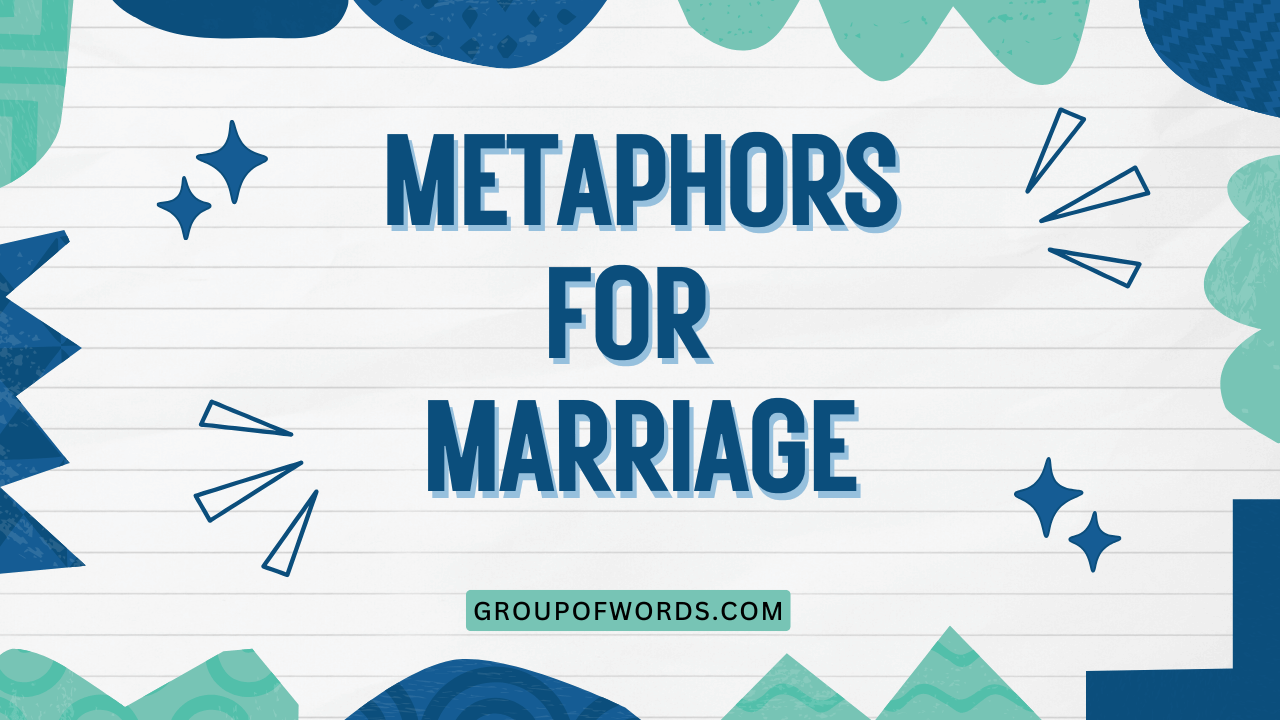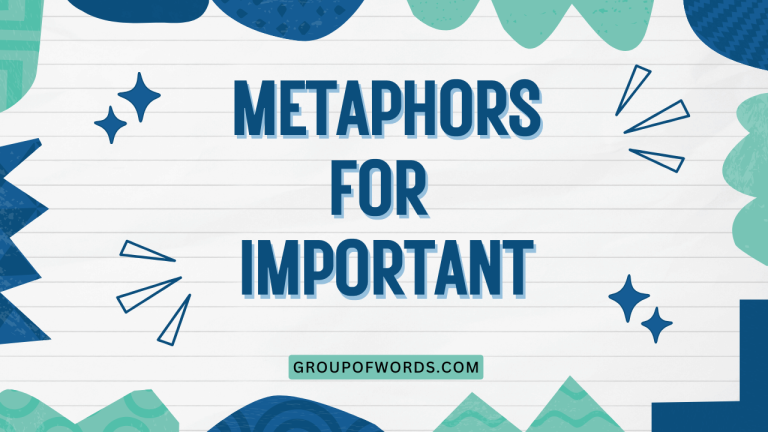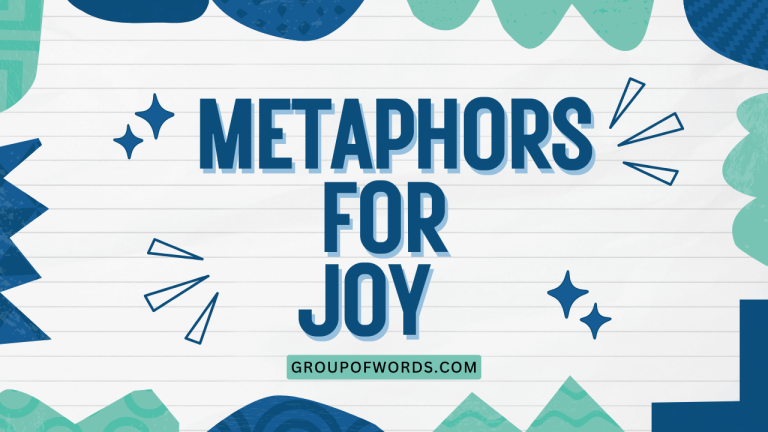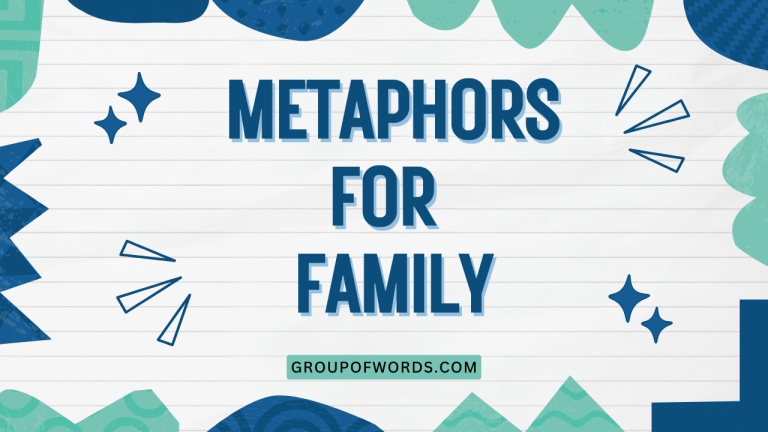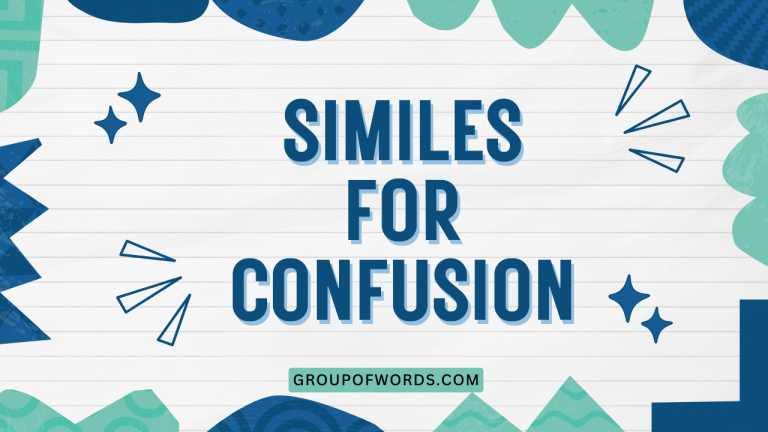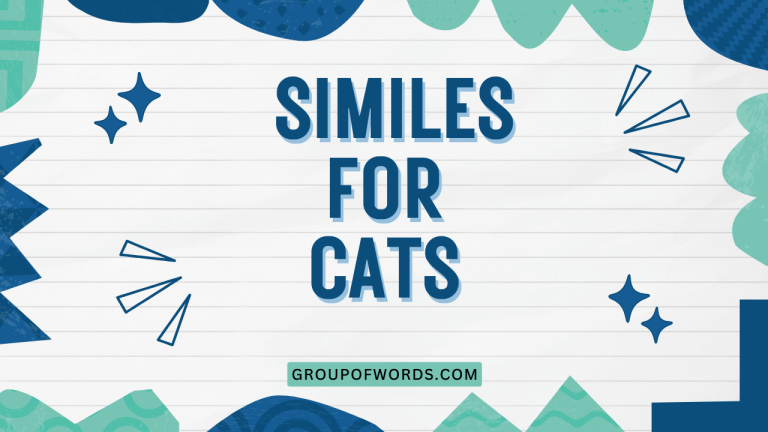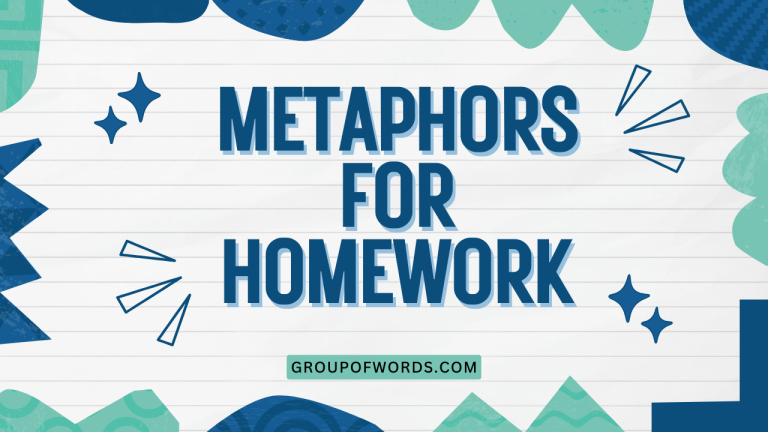Marriage Metaphors: Understanding Relationships Through Figurative Language
Marriage, a cornerstone of society and a deeply personal commitment, is often described using metaphors that paint vivid pictures of its complexities. Understanding these metaphors not only enriches our comprehension of marital dynamics but also enhances our grasp of figurative language in English.
This article delves into the diverse world of marriage metaphors, exploring their meanings, structures, and usage. It is designed for English language learners, literature enthusiasts, and anyone interested in the power of language to shape our understanding of relationships.
By examining common metaphors, we can gain insights into the cultural perceptions, expectations, and challenges associated with marriage. This knowledge is invaluable for improving communication skills, interpreting literature, and appreciating the nuances of human relationships.
Whether you’re a student, a teacher, or simply a curious individual, this comprehensive guide will equip you with the tools to analyze and appreciate the rich tapestry of marriage metaphors.
Table of Contents
- Introduction
- Defining Marriage Metaphors
- Structural Breakdown of Metaphors
- Types and Categories of Marriage Metaphors
- Examples of Marriage Metaphors
- Usage Rules for Marriage Metaphors
- Common Mistakes with Marriage Metaphors
- Practice Exercises
- Advanced Topics in Marriage Metaphors
- Frequently Asked Questions
- Conclusion
Defining Marriage Metaphors
A metaphor is a figure of speech that directly compares two unlike things without using “like” or “as.” Its purpose is to create a vivid image or convey a deeper meaning by associating the characteristics of one thing with another. In the context of marriage, metaphors are used to describe the relationship, its dynamics, and the experiences of the individuals involved. These metaphors can be drawn from various aspects of life, such as journeys, partnerships, battles, structures, gardens, or even economic transactions.
Marriage metaphors serve several important functions. They provide a shorthand way to express complex emotions and experiences.
They also shape our perceptions of marriage, influencing our expectations and attitudes. Furthermore, they can be powerful tools for communication, allowing couples to understand each other’s perspectives more clearly.
By using a metaphor, a speaker or writer can evoke a specific feeling or idea about marriage without explicitly stating it. The interpretation of marriage metaphors often depends on cultural context and personal experiences, making their analysis both challenging and rewarding.
The classification of marriage metaphors involves grouping them based on the source domain from which they are derived. For instance, metaphors that describe marriage as a “journey” belong to the “journey” category, while those that depict it as a “battlefield” fall into the “battlefield” category.
Understanding these categories helps to identify the underlying assumptions and values associated with different metaphors. The function of each metaphor is to highlight certain aspects of marriage while downplaying others.
For example, a “journey” metaphor may emphasize the progress and challenges of the relationship, while a “partnership” metaphor may focus on collaboration and mutual support. The contexts in which marriage metaphors are used vary widely, ranging from everyday conversations to literary works and legal documents.
Structural Breakdown of Metaphors
The structure of a metaphor involves two key elements: the tenor and the vehicle. The tenor is the subject being described (in this case, marriage), while the vehicle is the object or concept used to describe it. The connection between the tenor and the vehicle is based on shared characteristics or associations. For example, in the metaphor “Marriage is a rollercoaster,” the tenor is marriage, and the vehicle is a rollercoaster. The shared characteristics might include ups and downs, excitement, and unexpected turns.
The effectiveness of a metaphor depends on the clarity and relevance of the connection between the tenor and the vehicle. A strong metaphor creates a vivid and memorable image, while a weak metaphor may be confusing or ineffective.
The interpretation of a metaphor also depends on the context in which it is used. The same metaphor can have different meanings depending on the speaker’s intention and the audience’s understanding.
Furthermore, metaphors can be extended or elaborated upon to create more complex and nuanced meanings. This can involve adding details or sub-metaphors that further develop the comparison between the tenor and the vehicle.
Metaphorical patterns often emerge within specific cultural contexts. Certain metaphors for marriage may be more common or accepted in some societies than in others.
These patterns reflect the cultural values and beliefs associated with marriage. For example, in some cultures, marriage may be viewed primarily as an economic partnership, while in others, it may be seen as a romantic ideal.
These different perspectives are reflected in the metaphors that are used to describe marriage. Understanding these patterns can provide valuable insights into the cultural dimensions of marriage.
Types and Categories of Marriage Metaphors
Marriage metaphors can be categorized based on the source domain from which they are derived. Here are some common categories:
Journey Metaphors
Journey metaphors portray marriage as a voyage or expedition, emphasizing its progress, challenges, and destinations. These metaphors often highlight the idea that marriage is a continuous process of growth and discovery.
They can also emphasize the importance of navigating obstacles and overcoming challenges together.
Partnership Metaphors
Partnership metaphors focus on the collaborative and cooperative aspects of marriage. They emphasize the importance of teamwork, mutual support, and shared goals.
These metaphors often depict marriage as a partnership in which both individuals contribute equally and work together to achieve common objectives.
Battlefield Metaphors
Battlefield metaphors depict marriage as a struggle or conflict. They emphasize the challenges, disagreements, and power dynamics that can arise in a relationship.
These metaphors often highlight the need for compromise, negotiation, and resilience in the face of adversity. While often viewed negatively, they can also acknowledge the reality of conflict in any close relationship.
Structure Metaphors
Structure metaphors compare marriage to a building or other structure, emphasizing its stability, foundation, and design. These metaphors often highlight the importance of building a strong and lasting relationship based on trust, communication, and shared values.
They can also emphasize the need for careful planning and maintenance to ensure the relationship’s longevity.
Garden Metaphors
Garden metaphors portray marriage as a garden that needs to be cultivated and nurtured. They emphasize the importance of care, attention, and growth in a relationship.
These metaphors often highlight the need for both partners to contribute to the well-being of the marriage and to address any problems that may arise.
Economic Metaphors
Economic metaphors describe marriage in terms of investments, assets, and debts. They emphasize the exchange of resources, both tangible and intangible, between partners.
These metaphors often highlight the importance of fairness, balance, and financial stability in a marriage.
Examples of Marriage Metaphors
Here are some examples of marriage metaphors, organized by category:
Journey Metaphors Examples
The following table showcases various journey metaphors used to describe marriage, highlighting the different aspects of a marital journey like challenges, progress, and destinations.
| Metaphor | Meaning |
|---|---|
| Marriage is a rollercoaster. | Marriage has its ups and downs, filled with excitement and fear. |
| Our marriage is a long and winding road. | The marital journey is full of twists, turns, and unexpected events. |
| They embarked on their marital voyage with hope in their hearts. | The couple started their marriage with optimism and anticipation. |
| Marriage is a marathon, not a sprint. | Marriage requires endurance and long-term commitment. |
| We’re navigating the stormy seas of marriage. | The couple is facing challenges and difficulties in their relationship. |
| Their marriage is a journey of self-discovery. | The couple is learning and growing as individuals and as a couple. |
| The path of their marriage was paved with love and understanding. | The couple’s relationship was built on strong foundations. |
| Marriage is a hike up a steep mountain. | Marriage is challenging and requires hard work and perseverance. |
| They are lost in the wilderness of marriage. | The couple is feeling confused and uncertain about their relationship. |
| Our marriage is a train heading towards a bright future. | The couple is optimistic about their future together. |
| The marriage was a scenic route filled with beautiful moments. | The relationship was full of enjoyable and memorable experiences. |
| They hit a few potholes along the road of marriage. | The couple encountered some minor problems in their relationship. |
| Marriage is like crossing a bridge together. | The couple is overcoming obstacles and moving forward together. |
| Their marriage took a detour due to unforeseen circumstances. | The couple’s relationship was disrupted by unexpected events. |
| The couple found themselves at a crossroads in their marriage. | The couple had to make important decisions about their relationship. |
| Their marriage was a smooth sail until recently. | The relationship was easy and enjoyable for a long time. |
| Marriage is an expedition into the unknown. | Marriage involves venturing into uncharted territory together. |
| They reached a plateau in their marriage. | The couple’s relationship stagnated and lacked progress. |
| Their marriage was a rollercoaster of emotions. | The relationship was filled with intense and fluctuating feelings. |
| The couple is charting a new course for their marriage. | They are redefining their relationship and setting new goals. |
| Marriage is a long walk hand-in-hand. | Marriage is about companionship and shared experiences. |
| They packed their bags for the adventure of marriage. | The couple prepared themselves for the challenges and joys of marriage. |
Partnership Metaphors Examples
The following table lists partnership metaphors that illustrate marriage as a collaborative union, emphasizing teamwork, support, and shared goals.
| Metaphor | Meaning |
|---|---|
| Marriage is a team effort. | Marriage requires cooperation and collaboration from both partners. |
| They are two peas in a pod. | The couple is very similar and compatible. |
| Our marriage is a well-oiled machine. | The couple works together efficiently and harmoniously. |
| They are each other’s anchor in the storm. | The couple provides stability and support for each other during difficult times. |
| Marriage is a dance where both partners must learn the steps. | Marriage requires coordination and compromise from both individuals. |
| They are the perfect duet. | The couple complements each other perfectly. |
| Our marriage is a partnership built on trust and respect. | The couple’s relationship is founded on strong principles. |
| They are two branches of the same tree. | The couple is connected and interdependent. |
| Marriage is like a seesaw; it requires balance. | Marriage requires give and take from both partners. |
| They are each other’s rock. | The couple provides unwavering support and stability for each other. |
| Marriage is a bridge connecting two souls. | Marriage creates a strong bond and connection between two people. |
| They are the yin and yang of their marriage. | The couple brings complementary strengths to their relationship. |
| Our marriage is a symphony of love and understanding. | The couple’s relationship is harmonious and beautiful. |
| They are two halves of a whole. | The couple completes each other perfectly. |
| Marriage is a tapestry woven with shared experiences. | The couple’s relationship is rich and complex. |
| They are the co-captains of their marriage. | The couple shares responsibility and leadership in their relationship. |
| Our marriage is a shield against the world’s troubles. | The couple protects and supports each other. |
| They are each other’s compass, guiding them through life. | The couple provides direction and support for each other. |
| Marriage is a handshake of commitment. | Marriage symbolizes a strong and unwavering promise. |
| They are the dynamic duo of their family. | The couple works together effectively as a team. |
| Marriage is a shared canvas where they paint their life together. | The couple creates their future together. |
| They are the glue that holds their family together. | The couple provides stability and unity for their family. |
Battlefield Metaphors Examples
The following table offers examples of battlefield metaphors, portraying marriage as a site of conflict and struggle, highlighting the challenges and power dynamics within the relationship.
| Metaphor | Meaning |
|---|---|
| Marriage is a battlefield. | Marriage can be a constant struggle and conflict. |
| They are fighting a war of attrition in their marriage. | The couple is engaged in a long and exhausting conflict. |
| Our marriage is a constant power struggle. | The couple is always vying for control and dominance. |
| They are locked in a battle of wills. | The couple is stubbornly refusing to compromise. |
| Marriage can feel like a minefield. | Marriage can be full of hidden dangers and unexpected conflicts. |
| They are at war with each other. | The couple is constantly arguing and fighting. |
| Our marriage is a tug-of-war. | The couple is pulling in opposite directions. |
| They are defending their positions in the marriage. | The couple is stubbornly refusing to change their views. |
| Marriage can be a boxing match. | Marriage can involve intense and emotional confrontations. |
| They are casualties of their own marital war. | The couple has been damaged by their constant conflict. |
| Our marriage is a negotiation table. | The couple is constantly bargaining and compromising. |
| They are engaged in a cold war in their marriage. | The couple is distant and emotionally detached. |
| Marriage can feel like a siege. | Marriage can feel like a constant attack on one’s personal space. |
| They are retreating from each other in the marriage. | The couple is withdrawing and distancing themselves. |
| Our marriage is a game of chess. | The couple is strategically planning their moves. |
| They are sharpening their swords for the next battle. | The couple is preparing for another argument. |
| Marriage can be a demolition derby. | Marriage can be destructive and chaotic. |
| They are surrendering to each other’s demands. | The couple is giving in to each other’s wishes. |
| Our marriage is a battlefield of egos. | The couple’s pride is causing conflict. |
| They are building walls between each other in the marriage. | The couple is creating emotional barriers. |
| Marriage is a constant battle for independence. | Each partner struggles to maintain their individual identity. |
| They are fighting over the same territory in their marriage. | The couple is disagreeing over shared resources or responsibilities. |
Structure Metaphors Examples
The subsequent table presents structure metaphors that depict marriage as a building, emphasizing its stability, foundation, and design, highlighting the importance of building a strong and lasting relationship.
| Metaphor | Meaning |
|---|---|
| Marriage is a house built on trust. | Marriage requires a strong foundation of trust. |
| They are constructing a solid marriage together. | The couple is working to build a strong and lasting relationship. |
| Our marriage is a castle. | The couple’s relationship is strong, secure, and protected. |
| They are the architects of their own marriage. | The couple is designing and shaping their relationship. |
| Marriage can feel like a shaky foundation. | Marriage can be unstable and insecure. |
| They are repairing the cracks in their marriage. | The couple is working to fix problems in their relationship. |
| Our marriage is a bridge connecting two families. | The couple’s relationship strengthens the bond between their families. |
| They are the pillars of their family. | The couple provides support and stability for their family. |
| Marriage can be a fragile structure. | Marriage can be easily damaged or broken. |
| They are reinforcing the walls of their marriage. | The couple is strengthening their commitment to each other. |
| Our marriage is a sturdy oak tree. | The couple’s relationship is strong, resilient, and long-lasting. |
| They are the cornerstones of their community. | The couple provides leadership and support to their community. |
| Marriage can feel like a house of cards. | Marriage can be easily toppled or destroyed. |
| They are renovating their marriage. | The couple is making improvements to their relationship. |
| Our marriage is a lighthouse, guiding us through life’s storms. | The couple’s relationship provides guidance and support. |
| They are the foundation upon which their children’s lives are built. | The couple provides a stable and loving environment for their children. |
| Marriage can be a maze. | Marriage can be confusing and difficult to navigate. |
| They are rebuilding their marriage after a crisis. | The couple is working to restore their relationship after a difficult time. |
| Our marriage is a well-designed building. | The couple’s relationship is carefully planned and executed. |
| They are the framework of their family. | The couple provides structure and support to their family. |
| Marriage is a solid foundation for a happy life. | Marriage provides stability and security. |
| They are constructing a life together, brick by brick. | The couple is slowly building their future together. |
Garden Metaphors Examples
The following table illustrates garden metaphors used to describe marriage, emphasizing the need for care, attention, and growth in a relationship, highlighting the importance of nurturing the marital bond.
| Metaphor | Meaning |
|---|---|
| Marriage is a garden that needs tending. | Marriage requires constant care and attention. |
| They are nurturing their marriage like a delicate flower. | The couple is providing gentle care and support to their relationship. |
| Our marriage is a blossoming garden. | The couple’s relationship is thriving and flourishing. |
| They are weeding out the negativity in their marriage. | The couple is removing harmful influences from their relationship. |
| Marriage can feel like a barren wasteland. | Marriage can be empty and unfulfilling. |
| They are planting seeds of love in their marriage. | The couple is cultivating positive emotions and experiences. |
| Our marriage is a fertile ground for growth. | The couple’s relationship provides opportunities for personal and mutual development. |
| They are pruning back the dead branches in their marriage. | The couple is removing unnecessary and harmful aspects of their relationship. |
| Marriage can be a thorny rose bush. | Marriage can be beautiful but also painful. |
| They are watering their marriage with affection and attention. | The couple is providing nourishment and care to their relationship. |
| Our marriage is a vibrant ecosystem. | The couple’s relationship is complex and interconnected. |
| They are harvesting the fruits of their labor in their marriage. | The couple is enjoying the rewards of their hard work and dedication. |
| Marriage can feel like a drought. | Marriage can lack emotional connection and intimacy. |
| They are cultivating patience in their marriage. | The couple is developing the ability to tolerate difficulties and delays. |
| Our marriage is a field of wildflowers. | The couple’s relationship is natural, free, and beautiful. |
| They are the gardeners of their own marriage. | The couple is responsible for the care and maintenance of their relationship. |
| Marriage can be overgrown with weeds. | Marriage can be neglected and filled with problems. |
| They are fertilizing their marriage with positive communication. | The couple is nourishing their relationship with healthy interactions. |
| Our marriage is a sanctuary of peace and tranquility. | The couple’s relationship provides a safe and comforting space. |
| They are sowing the seeds of forgiveness in their marriage. | The couple is planting the idea of reconciliation and letting go of past hurts. |
| Marriage is like tending to a bonsai tree, requiring constant shaping and care. | The relationship requires constant effort and refinement to maintain its beauty and balance. |
Economic Metaphors Examples
The following table presents economic metaphors that describe marriage in terms of investments, assets, and debts, emphasizing the exchange of resources and highlighting the importance of fairness and balance.
| Metaphor | Meaning |
|---|---|
| Marriage is an investment in the future. | Marriage requires long-term commitment and resources. |
| They are building equity in their marriage. | The couple is accumulating positive experiences and memories. |
| Our marriage is a valuable asset. | The couple’s relationship is a source of strength and support. |
| They are managing their marital finances carefully. | The couple is being responsible with their shared resources. |
| Marriage can feel like a financial burden. | Marriage can be expensive and stressful. |
| They are depositing love and affection into their marriage bank. | The couple is building up a reserve of positive emotions. |
| Our marriage is a profitable partnership. | The couple benefits mutually from their relationship. |
| They are balancing the books in their marriage. | The couple is ensuring fairness and equality in their relationship. |
| Marriage can be a risky venture. | Marriage can involve uncertainty and potential loss. |
| They are withdrawing emotional support from their marriage. | The couple is neglecting each other’s needs. |
| Our marriage is a mutual fund of shared dreams. | The couple is investing in their collective aspirations. |
| They are auditing their marriage to identify areas for improvement. | The couple is evaluating their relationship to find ways to make it better. |
| Marriage can feel like a debt that can’t be repaid. | Marriage can be a source of resentment and obligation. |
| They are investing time and energy into their marriage. | The couple is dedicating resources to their relationship. |
| Our marriage is a treasure trove of memories. | The couple’s relationship is filled with valuable and cherished experiences. |
| They are the stockholders of their family’s future. | The couple has a vested interest in the success of their children and family. |
| Marriage can feel like a hostile takeover. | Marriage can feel like a loss of personal control and autonomy. |
| They are reinvesting in their marriage after a crisis. | The couple is committing to rebuilding their relationship. |
| Our marriage is a balanced budget of give and take. | The couple’s relationship is fair and equitable. |
| They are the trustees of their family’s legacy. | The couple is responsible for preserving and passing on their family’s values and traditions. |
| Marriage is a long-term bond with fluctuating interest rates. | The relationship’s rewards and challenges vary over time. |
| They are diversifying their emotional portfolio within the marriage. | The couple is exploring new ways to connect and support each other. |
Usage Rules for Marriage Metaphors
When using marriage metaphors, it’s important to consider the context and audience. A metaphor that is appropriate in one situation may be inappropriate in another.
For example, a battlefield metaphor may be suitable for describing a challenging period in a marriage, but it may be insensitive to use it when discussing a couple’s wedding day. It’s also important to avoid overusing metaphors, as this can make your language sound clichéd and unoriginal.
Instead, aim to use metaphors sparingly and creatively to enhance your communication.
The effectiveness of a marriage metaphor depends on its clarity and relevance. A good metaphor should be easy to understand and should accurately reflect the aspect of marriage that you are trying to describe.
Avoid using metaphors that are too abstract or obscure, as these may confuse your audience. It’s also important to ensure that your metaphors are consistent with each other.
Mixing metaphors can create a jarring effect and undermine your credibility.
Cultural sensitivity is also an important consideration when using marriage metaphors. Different cultures may have different perspectives on marriage, and certain metaphors may be more or less acceptable in different cultural contexts.
Be mindful of these differences and avoid using metaphors that could be offensive or insensitive. For example, in some cultures, marriage may be viewed primarily as an economic partnership, while in others, it may be seen as a romantic ideal.
Using a metaphor that reflects the prevailing cultural view can help to build rapport and avoid misunderstandings.
Common Mistakes with Marriage Metaphors
One common mistake is using clichéd metaphors. Overused metaphors like “Marriage is a rollercoaster” can lose their impact and sound unoriginal.
Instead, try to create fresh and imaginative metaphors that offer a new perspective on marriage.
Another mistake is mixing metaphors. For example, saying “Marriage is a rollercoaster that needs tending like a garden” combines two unrelated metaphors and creates a confusing image.
It’s important to maintain consistency in your metaphorical language.
A further mistake is using inappropriate metaphors. A battlefield metaphor, for instance, might be unsuitable when describing a happy and harmonious marriage.
Choose metaphors that accurately reflect the tone and context of your message.
Here’s a table illustrating some common mistakes with marriage metaphors:
| Incorrect | Correct | Explanation |
|---|---|---|
| Marriage is a rollercoaster that needs weeding. | Marriage is a rollercoaster. / Marriage is a garden that needs weeding. | Mixing metaphors creates a confusing image. |
| Our marriage is a war zone of love. | Our marriage is a challenging but ultimately rewarding journey. | Using inappropriate metaphors can be insensitive. |
| Marriage is a piece of cake. | Marriage is a long-term commitment. | Using a metaphor that trivializes marriage is misleading. |
| Their marriage is a well-oiled machine on a battlefield. | Their marriage is a well-oiled machine. / Their marriage is a constant battle. | Combining contradictory metaphors creates confusion. |
| Marriage is a walk in the park, full of thorns and roses. | Marriage is a walk in the park. / Marriage is full of thorns and roses. | Inconsistent metaphors create a mixed and confusing image. |
Practice Exercises
Test your understanding of marriage metaphors with the following exercises:
Exercise 1: Identifying Metaphors
Identify the marriage metaphor in each sentence:
| Question | Answer |
|---|---|
| 1. Their marriage is a ship sailing through stormy waters. | Ship sailing through stormy waters |
| 2. Marriage is a garden that requires constant care. | Garden that requires constant care |
| 3. Our marriage is a fortress, strong and impenetrable. | Fortress, strong and impenetrable |
| 4. They are building a bridge between their two families. | Building a bridge |
| 5. Marriage is a marathon, not a sprint. | Marathon, not a sprint |
| 6. Their marriage is a dance, requiring grace and coordination. | Dance, requiring grace and coordination |
| 7. Marriage is a puzzle, and they are piecing it together. | Puzzle, piecing it together |
| 8. Our marriage is a symphony of love and understanding. | Symphony of love and understanding |
| 9. They are navigating the minefield of married life. | Navigating the minefield |
| 10. Marriage is a long and winding road. | Long and winding road |
Exercise 2: Interpreting Metaphors
Explain the meaning of each marriage metaphor:
| Question | Answer |
|---|---|
| 1. Marriage is a rollercoaster. | Marriage has ups and downs, filled with excitement and challenges. |
| 2. Their marriage is a team effort. | Marriage requires cooperation and collaboration from both partners. |
| 3. Our marriage is a battlefield. | Marriage can be a constant struggle and conflict. |
| 4. They are building a house on a solid foundation. | The couple is working to build a strong and lasting relationship. |
| 5. Marriage is a garden that needs tending. | Marriage requires constant care and attention to thrive. |
Exercise 3: Using Metaphors
Complete the following sentences using an appropriate marriage metaphor:
| Question | Answer |
|---|---|
| 1. Their marriage is like a ______, always providing warmth and comfort. | Their marriage is like a fireplace, always providing warmth and comfort. |
| 2. Marriage is a ______, where both partners must contribute equally. | Marriage is a seesaw, where both partners must contribute equally. |
| 3. Our marriage is a ______, guiding us through life’s challenges. | Our marriage is a compass, guiding us through life’s challenges. |
| 4. They are the _______ of their family, providing strength and support. | They are the pillars of their family, providing strength and support. |
| 5. Marriage is a _______, requiring patience and understanding. | Marriage is a journey, requiring patience and understanding. |
Advanced Topics in Marriage Metaphors
Exploring the extended metaphor in literature involves analyzing how a single metaphor is developed and sustained throughout a text. This can reveal deeper themes and insights about marriage.
For example, a novel might use the metaphor of a garden to represent a marriage, with various events and characters influencing the garden’s growth and health. Analyzing the symbolism and imagery associated with the garden can provide a richer understanding of the characters’ relationships and the overall message of the novel.
The impact of cultural context on the interpretation of marriage metaphors is significant. Different cultures may have different values and beliefs about marriage, which can influence how metaphors are understood.
For example, in some cultures, marriage may be viewed primarily as an economic arrangement, while in others, it may be seen as a romantic ideal. Understanding these cultural differences is essential for avoiding misinterpretations and appreciating the diversity of perspectives on marriage.
Analyzing marriage metaphors in different cultural contexts can provide valuable insights into the social and historical factors that shape our understanding of relationships.
The ethical considerations in using marriage metaphors involve being mindful of the potential impact of your language on others. Avoid using metaphors that could be offensive, insensitive, or harmful.
For example, using a battlefield metaphor to describe a marriage that is already struggling could exacerbate the conflict and create further distress. It’s important to choose metaphors that are appropriate for the context and that promote understanding and empathy.
Furthermore, be aware of the power of language to shape perceptions and avoid using metaphors that reinforce negative stereotypes or harmful beliefs about marriage.
Frequently Asked Questions
What is the difference between a metaphor and a simile?
A metaphor directly compares two unlike things without using “like” or “as,” while a simile uses “like” or “as” to make the comparison. For example, “Marriage is a journey” is a metaphor, while “Marriage is like a journey” is a simile.
Why are metaphors useful in describing marriage?
Metaphors provide a vivid and concise way to express complex emotions and experiences related to marriage. They can help to make abstract concepts more concrete and relatable.
How can I create my own marriage metaphors?
Start by identifying the key aspects of marriage that you want to describe. Then, think of objects, concepts, or experiences that share similar characteristics.
Use these to create a metaphor that captures the essence of your message.
Are some marriage metaphors better than others?
The effectiveness of a metaphor depends on its clarity, relevance, and appropriateness for the context. A good metaphor should be easy to understand and should accurately reflect the aspect of marriage that you are trying to describe.
Can marriage metaphors be harmful?
Yes, if they are used inappropriately or insensitively. Avoid using metaphors that could be offensive, harmful, or that reinforce negative stereotypes about marriage.
Conclusion
Marriage metaphors offer a rich and insightful way to understand the complexities of marital relationships. By exploring these metaphors, we gain a deeper appreciation for the challenges, joys, and dynamics that shape our understanding of marriage.
Whether you’re an English language learner, a literature enthusiast, or simply someone interested in improving your communication skills, mastering the art of marriage metaphors can enhance your ability to express yourself effectively and connect with others on a deeper level.
From journey metaphors that highlight the continuous progress and challenges of marriage to partnership metaphors that emphasize collaboration and mutual support, the world of marriage metaphors is vast and varied. By understanding the structure, types, and usage rules of these metaphors, you can unlock their power to illuminate the human experience and enrich your understanding of relationships.
So, embrace the art of metaphorical language and embark on a journey of discovery into the heart of marriage.
